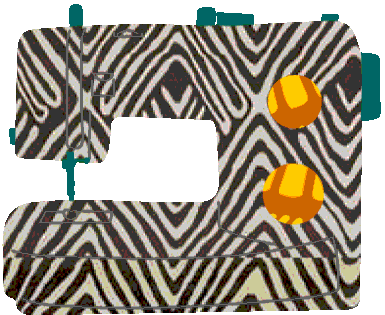Second-hand clothing as a response to overconsumption
Second-hand clothes
When talking about "second-hand" clothing, the first images that pop to mind are usually crumpled and / or faded out stuffed in wheelbarrows or on the ground. But beyond this type of cliché, the "second-hand" clothing sector is an economic activity that benefits many people. As with any commercial activity, the sale of "second-hand" clothing has its own paradox. This article aims to present some advantages, but also the drifts that the sector is facing.
Second-hand clothing as a response to overconsumption
In Africa, we like to dress, and above all, we hate to spend several days in the same garment. As long as we can, we have to buy clothes. But the quality of the clothes as well as fashion's frequency don't make it possible to use them a long time. So we end up with lots of clothes. We don't even wear half of them that we already want others. In fact, your new polo or t-shirt is in bad shape, while the pair of shoes you bought recently is old-fashioned. This is usually how it happens. When we buy second-hand clothes, this is how we think: even if it's going to end up in the trash quickly, we didn’t spend a lot of money to have them.
The other problem to which the second-hand provides an answer is the high cost of new clothes. To have excellent value for money, raw materials must be supplied continuously, and the associated production costs must be competitive. Of course, this is not possible at the moment. The products are expensive, and their lifespan from the factory to the landfill is always shorter. The average consumer no longer wants to pay a lot of money to get dressed. "Second-hand" clothing is therefore an excellent alternative.
Second-hand ready-to-wear
Second-hand ready-to-wear has been trending for a decade. For young and old alike with limited budgets, these clothes are a real boon. There is everything here, especially fashionable outfits, whose prices are insignificant compared to the price of new outfits. Quality is not necessarily what counts, but the idea of being fashionable by spending little eclipses everything else. Today, there are more and more people who are embarking on this activity that still has a bright future ahead of it.
However, it has been a long time since second-hand clothes rub shoulders with new clothes. Some fashion store owners sometimes use this type of clothing to reduce purchase costs. But of course, they usually "forget" to tell the customer and sell them at the same price as new outfits. This is how some people find themselves buying "second-hand" clothes thinking they have paid for a new product. This is to say that second-hand clothes have completely invaded our living environment. In Africa, these clothes come from Europe, America and sometimes Asia. But what about thrift shops designed on the continent, by Africans?
A promising sector for Africa?
For this sector to be truly beneficial for Africa, it’s necessary that the resold clothing comes from our production circuit. In fact, most of the "second-hand" clothing on the market is labeled with foreign brands. This represents hundreds of containers that are shipped each day from France, Switzerland, the United States, China, etc. Once in Africa, clothes are sold to semi-wholesalers or retailers who in turn sell them in the markets of towns and villages.
In the past, it was different because the clothes were shipped for the poor. But since the increase in purchasing power of Western populations, charities prefer to sell them to finance their projects. Since the situation has changed, we have to adapt. The continent has a production circuit, and it would be interesting to find on the market more products "second-hand" from this circuit. In addition, most of the people in the sector work in the informal sector. This does not make it possible to follow exactly how much this sector reports.
The good news is that there are still thousands of people who have better living conditions thanks to this activity. In fact, trade in "second-hand" clothing is the main source of income for some. Even if the sector does not report big to the States, it contributes to the improvement of the quality of life of the populations.
